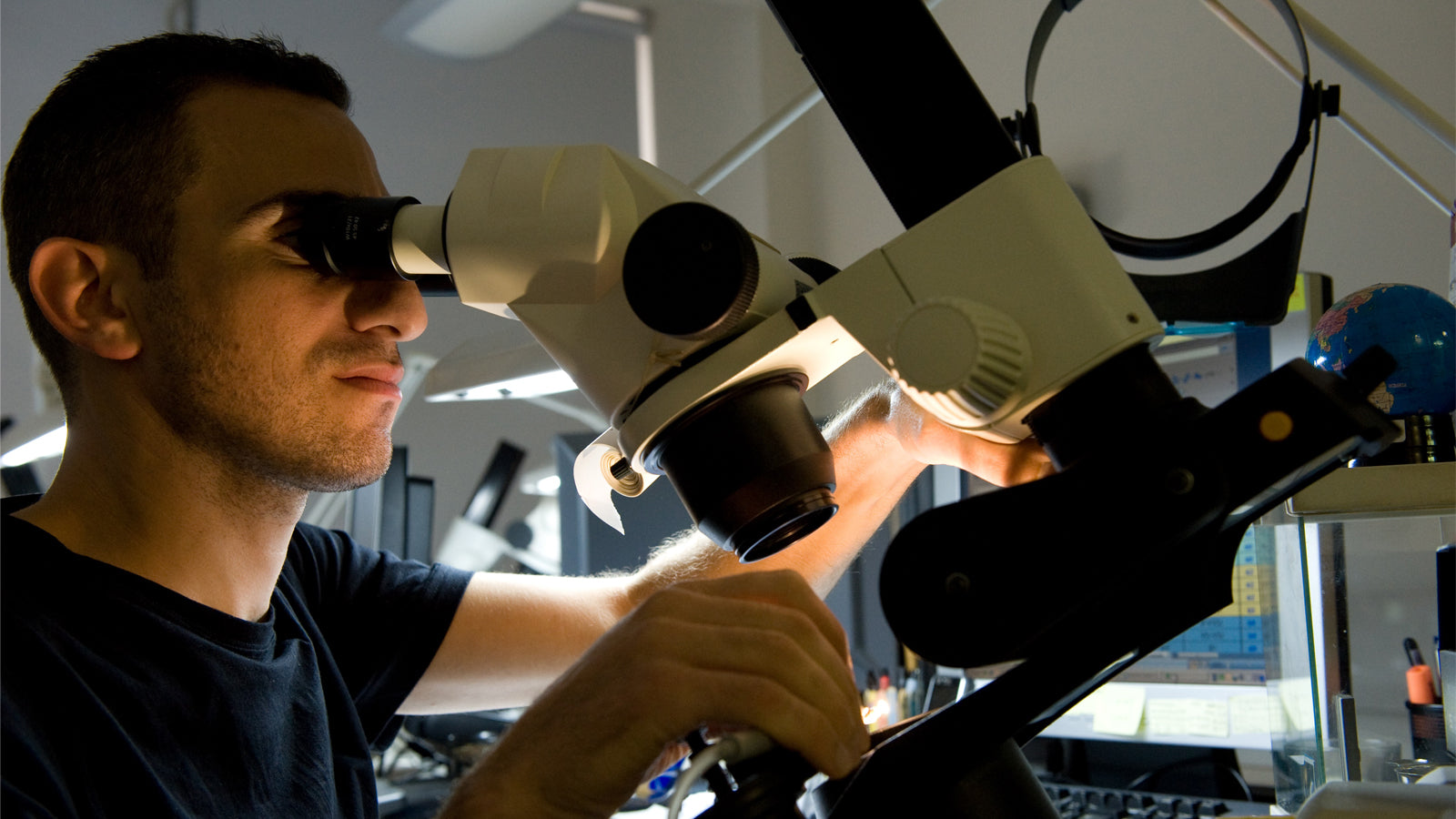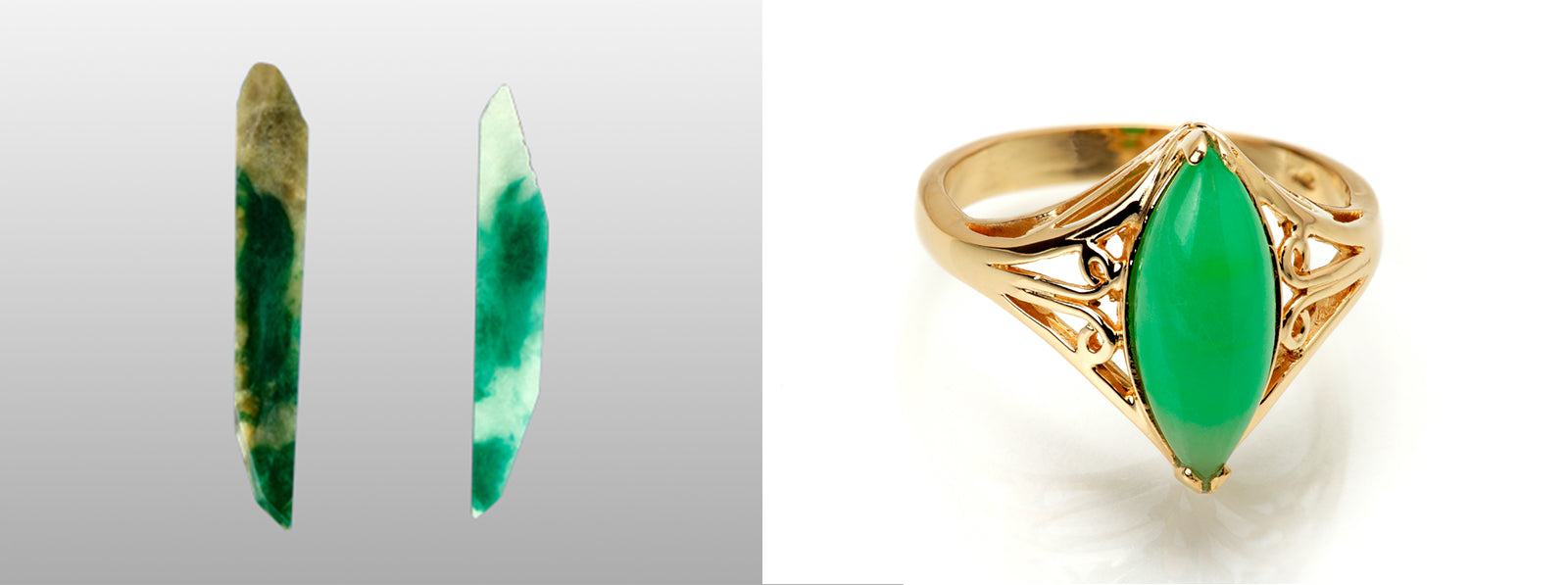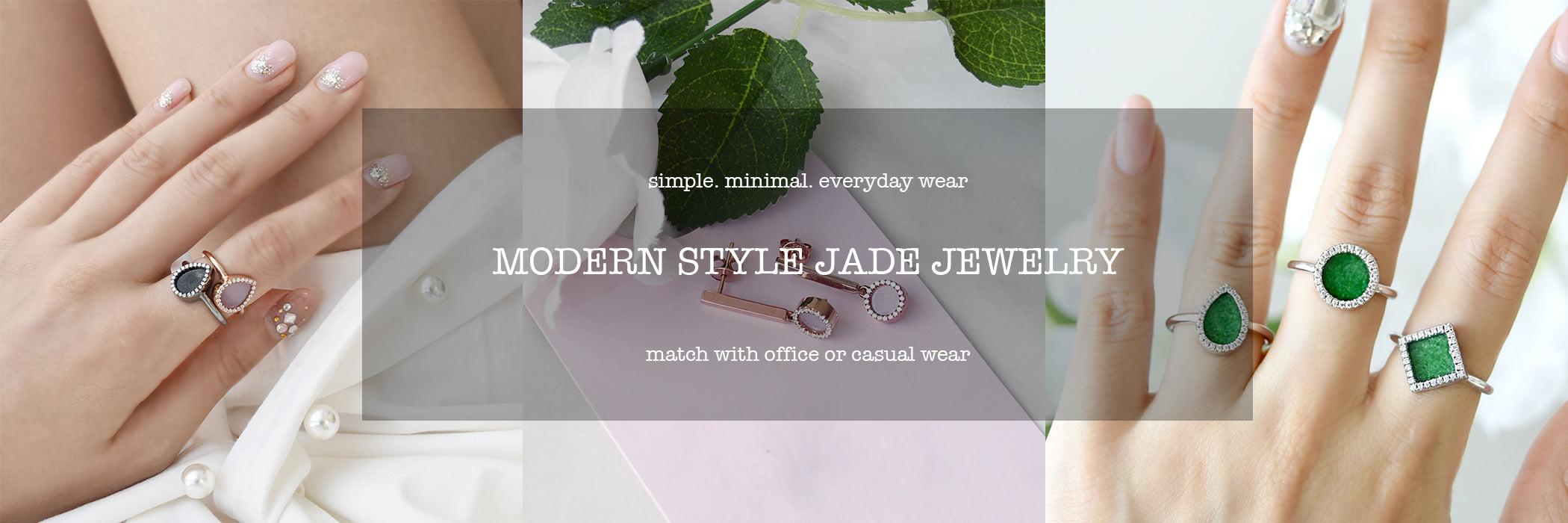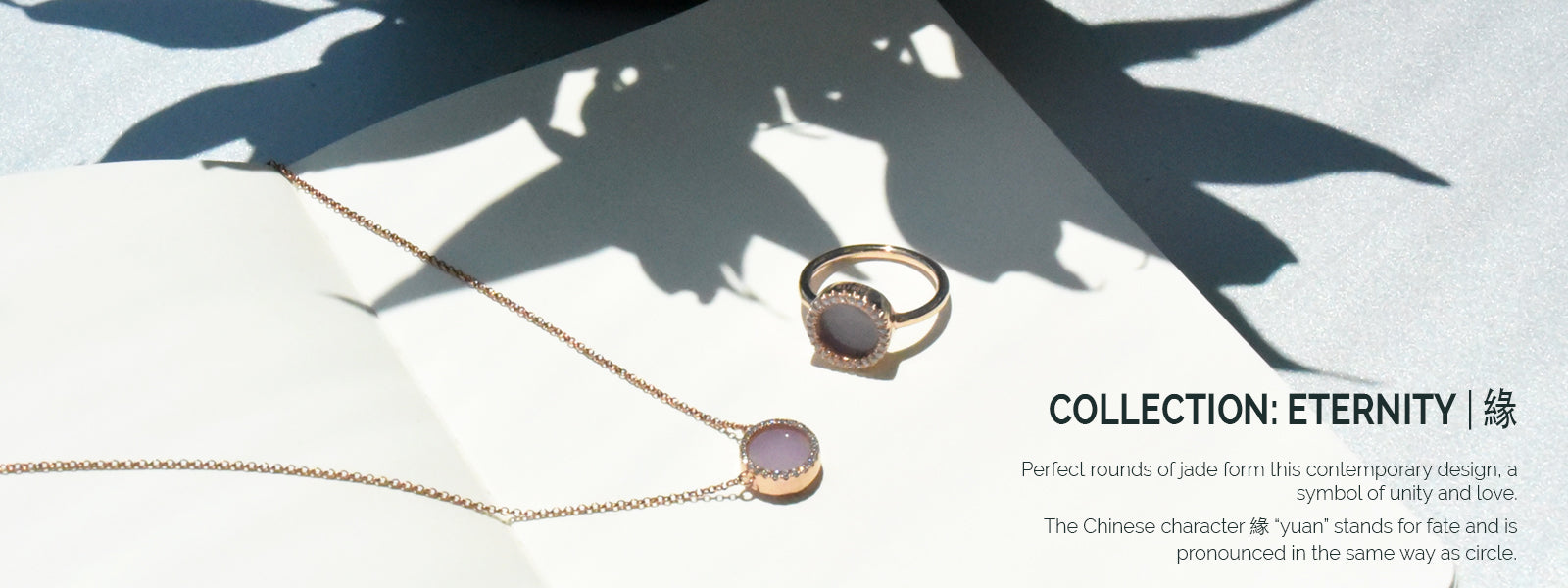Your Cart is Empty
FREE SHIPPING WORLDWIDE | 2-YEAR WARRANTY | MULTI-CURRENCY CHECK OUT
Menu
FREE SHIPPING WORLDWIDE | 2-YEAR WARRANTY | MULTI-CURRENCY CHECK OUT
Shop
Jade Blog
Visit Us

Jade Certification: What is type A, B, C jade?
May 15, 2019 4 min read
Jade Certification: What is type A, B, C jade?
In the current marketplace of gemstone, heat treatment or color enhancement is a common practice in order to produce formidable gems at an affordable price. Almost any type of gemstone which you may have encountered can be offered in a form that has been treated or enhanced. The common list of gems include (and more): diamond, ruby, sapphire, pearl, tanzanite, topaz, coral, quartz, amber, amethyst, citrine, aquamarine, tourmaline and much more.
Malpractice in the marketplace occur when there is non-disclosure of this treatment leading the buyer to believe that the particular gemstone was of higher quality naturally and thereby over paying for more than he or she should.
To learn more about the marketplace abundance of treated gems, read the following article from Business of Fashion: “Jewellery’s Naughty Little Secret: Treated Gemstones”.
While the heat treatment or color enhancement process is widely adopted and accepted in some gems, this is not the case in the marketplace of jade. In fact any forms of treatment other than polishing is considered unnaturally and deemed low-value. Treated jadeite looks stunning at first sight with its vibrant green color and it is common to see them being sold at flea markets, tourist souvenir shops or even in western country department stores. In the eyes of professional jade merchants, these treated jadeite items are mere novelties and offer close to nothing in value other than its aesthetic look. Before we go further, it is important to note that treatment most only applies to jadeite, specifically Burmese jadeite, because of the difference in value. Most nephrites are not treated because they are overly abundant and there is little to gain from enhancing them. The picture below on the left shows the raw material before and after bleaching. To the right we see the treated jade being used in gold jewelry.

To the average person it is near impossible to spot the difference between natural and treated jadeite. Experienced jade cutters can tell the difference because of the slight change in weight as treated jade is infused with polymer resin which is lighter than its original form. Even so, this examination by touch is not 100% guaranteed and often for valuable jadeite items it is safer to have it certified at the local gemstone laboratory. The certification of jadeite is divided into three categories: Type A, Type B and Type C.
Type A Jadeite – Natural form
We consider this as the only accepted form that jadeite should be. Type A natural jadeite means that the subject qualifies to be free of any form of chemical treatment. As part of the polishing process, coating the jadeite with colorless wax is accepted so long as it does not damage the crystalline structure of the subject. After fine polishing, the jadeite item is dipped in heated wax of liquid form and once cooled down it is buffed to give a smooth lustrous look much like the process of car waxing.
Type B Jadeite – Chemically treated and resin infused
Type B jadeite means that the subject has been soaked in acid which removes impurities or oxidation stains producing a “bleaching” effect. This process lightens the color of many materials including jadeite and leaves many holes or micro craters inside throughout the subject. Next, it is placed into a vacuum chamber where polymer resins are infused into it and after the final polish the treated jadeite looks smooth and lustrous in color. Unfortunately, the appearance of Type B jadeite can change and deteriorate over time. The polymer resin can discolor and oxidize when exposed to heat and sunlight and turn yellowish.
Type C Jadeite – Dyed coloring
Typically, type C jadeite has undergone all the treatments of type B and with the addition of dyed coloring added to the polymer resin to produce an enhanced or additional coloring effect. Certain jade collectors look for jadeite items that come in three colors: green, white, orange or purple.
Hong Kong Jade & Stone Laboratory -- click to visit
This is one of the most reputable laboratory for jade certification in Hong Kong. Almost every piece of jadeite jewellery being auctioned by the famous auction houses of Sotheby's or Christie's in Hong Kong are certified at this establishment.

Our Thoughts for you...
The purchasing of jadeite can be tricky and we would suggest that you always transact with a trusted reputable party. When in doubt, confirm the jadeite type by requesting for a certification performed by a gemological laboratory. Needless to say, type B or C jadeite should only be purchased for a price that assumes for casual recreation use.
At Jadeite Atelier,every piece of jade that is used in our jewelry is guaranteed to be from origin Myanmar (Burma) and of certifiable jadeite grade in type A. That is 100% natural and free from any form of chemical treatment. To ensure that our products are controlled at a high quality and of ethical origins, we source our jade in raw form directly through official channels from Myanmar (Burma). Each and every piece of jade that we use is hand cut by ourselves here locally in Hong Kong.
Ready to see what sort of jade jewelry we have to offer? We currently offer 5 different color shades of natural Type A: Empowering Green, Dainty Lavender, Mystic Black, Fresh Green and Ice White. Lets go see Jade Jewelry now!
Our source of trusted laboratory for jade certification, in Hong Kong:
- Hong Kong Jade & Stone Laboratory
- Hong Kong Gems Laboratory
- Hong Kong Kowloon Jade & Jewellery Laboratory
- Asian Gemmological Institute and Laboratory Limited
Click HERE to see our Aqua | 水 collection
Subscribe
Sign up to get the latest on sales, new releases and more …




